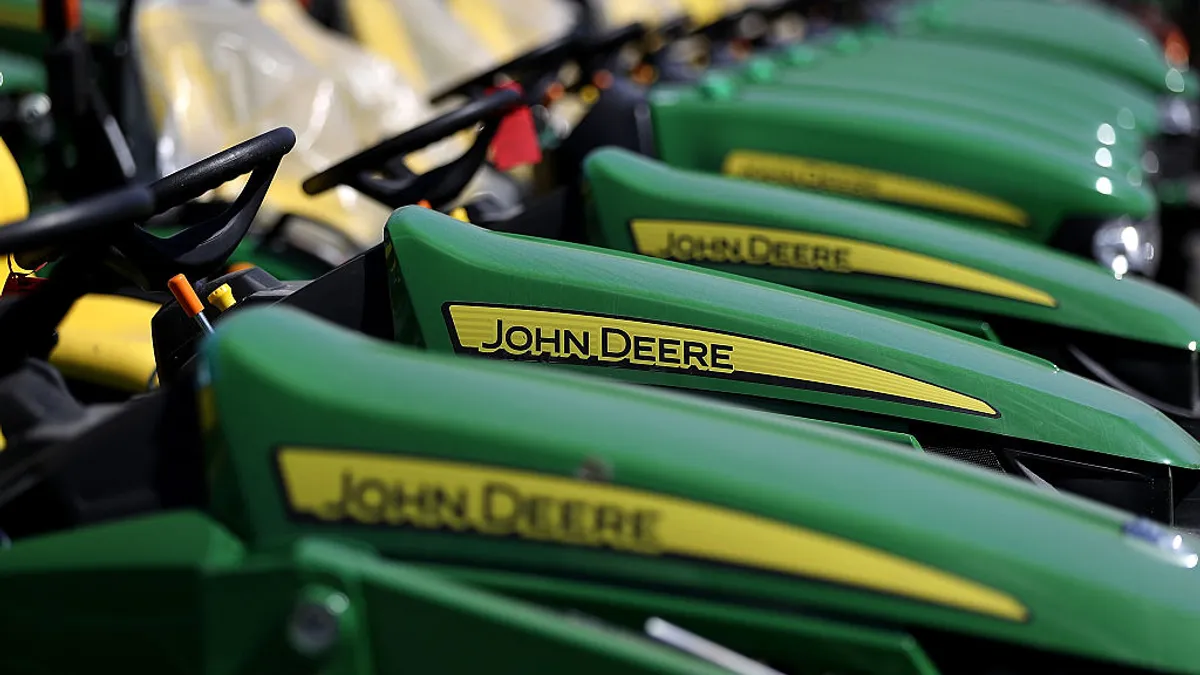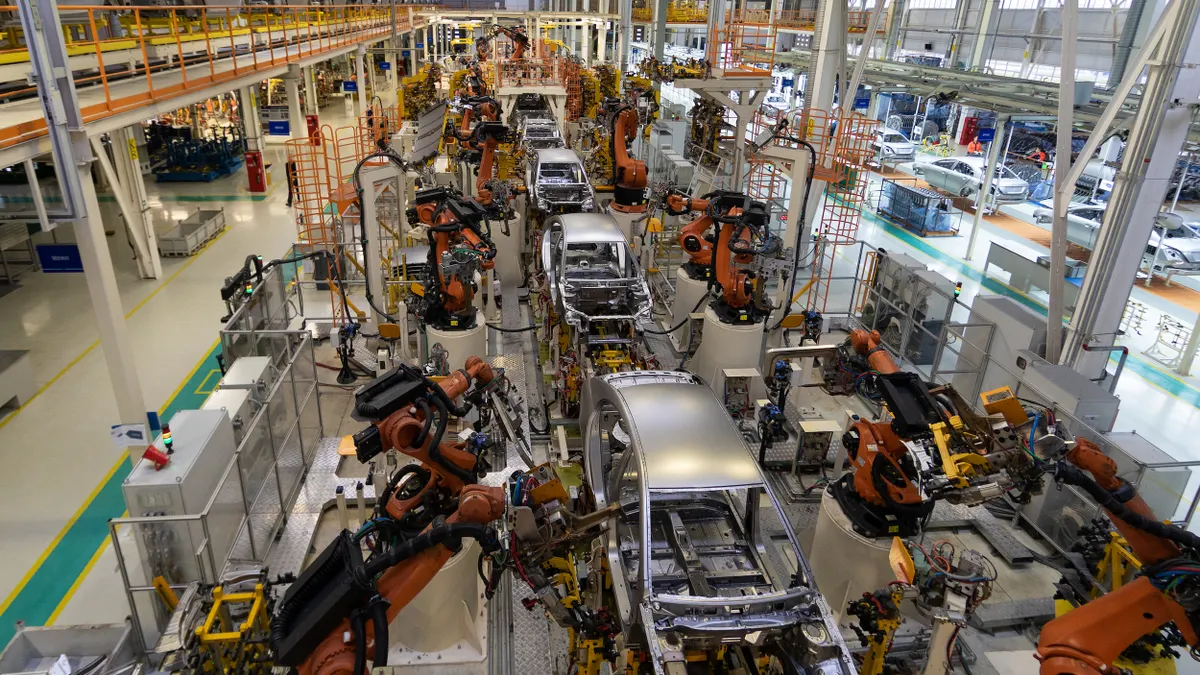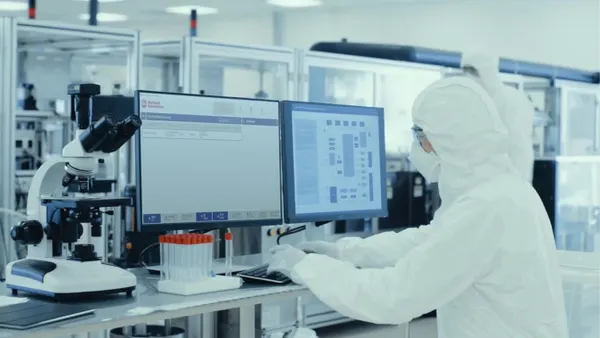Dive Brief:
- Deere & Co. is bracing for a $500 million tariff impact on its farm and construction equipment operations this year, executives said on an earnings call Thursday.
- The Moline, Illinois-based company incurred tariff-related expenses of $100 million in the second quarter, and expects those costs to be close to $400 million for the rest of the year, CFO Josh Jepsen said on the call.
- The forecast is based on tariffs in effect as of May 13, including the reduction in reciprocal and retaliatory rates between China and the United States set earlier this week.
Dive Insight:
Deere, like other companies, is actively monitoring the tariffs situation and taking steps to mitigate their effects. Recently, Deere certified goods and components that were previously ineligible for free trade under the U.S.-Mexico-Canada Agreement, Jepsen said. The supply chain team is also working to optimize global trade flows and monitor component sourcing.
In terms of pricing actions, given that most of the order books are full for 2025, Jepsen said “there’s not much opportunity.” However, Deere is evaluating price increases for its 2026 equipment.
“We are doing so being very mindful of the dynamic environment and the pressures our customers have had to deal with over the past few years,” Jepsen said.
Looking ahead, Deere widened its full-year guidance, citing near-term market challenges and ongoing trade uncertainty. The company reported a net income range between $4.75 billion and $5.5 billion, reflecting a downward revision of $250 million compared with its previous forecast.
In terms of tariffs, Deere is expecting most of the $500 million headwind to impact its construction and forestry operations, which are more exposed to China than its agriculture operations. According to a company presentation, nearly 80% of its goods sold are assembled in U.S. manufacturing facilities.
Deere has more than 60 locations across 16 states.
In addition to trade headwinds, Deere has been navigating a downturn in the market as high interest rates and economic uncertainty slow demand for heavy machinery purchases like tractors and bulldozers. However, things may be starting to turn around.
Despite historic levels of volatility, Chairman and CEO John May said the company performed better than expected as Q2 sales and revenues rebounded from the previous quarter. Results doubled over the period.
Deere attributed the higher sales, in part, to stronger farm balance sheets as the U.S. government distributes $10 billion in emergency payments to farmers following a poor 2024 crop year. The company is expecting increased farm liquidity and more stable crop prices to help mitigate tariff effects for the remainder of 2025.
“In the near term, we’ll continue to proactively manage what we can control — cost, production, inventory and quality — to navigate this environment while driving the margins that fuel our investments in the future,” May said on the call.
Deere is prepared to spend $20 billion in the U.S. over the next 10 years, May said. While no specific details were disclosed, the company is looking to invest in new product development, the latest technologies and advanced manufacturing.
“As we look forward, we’re more excited than ever about the opportunities ahead,” May said.














